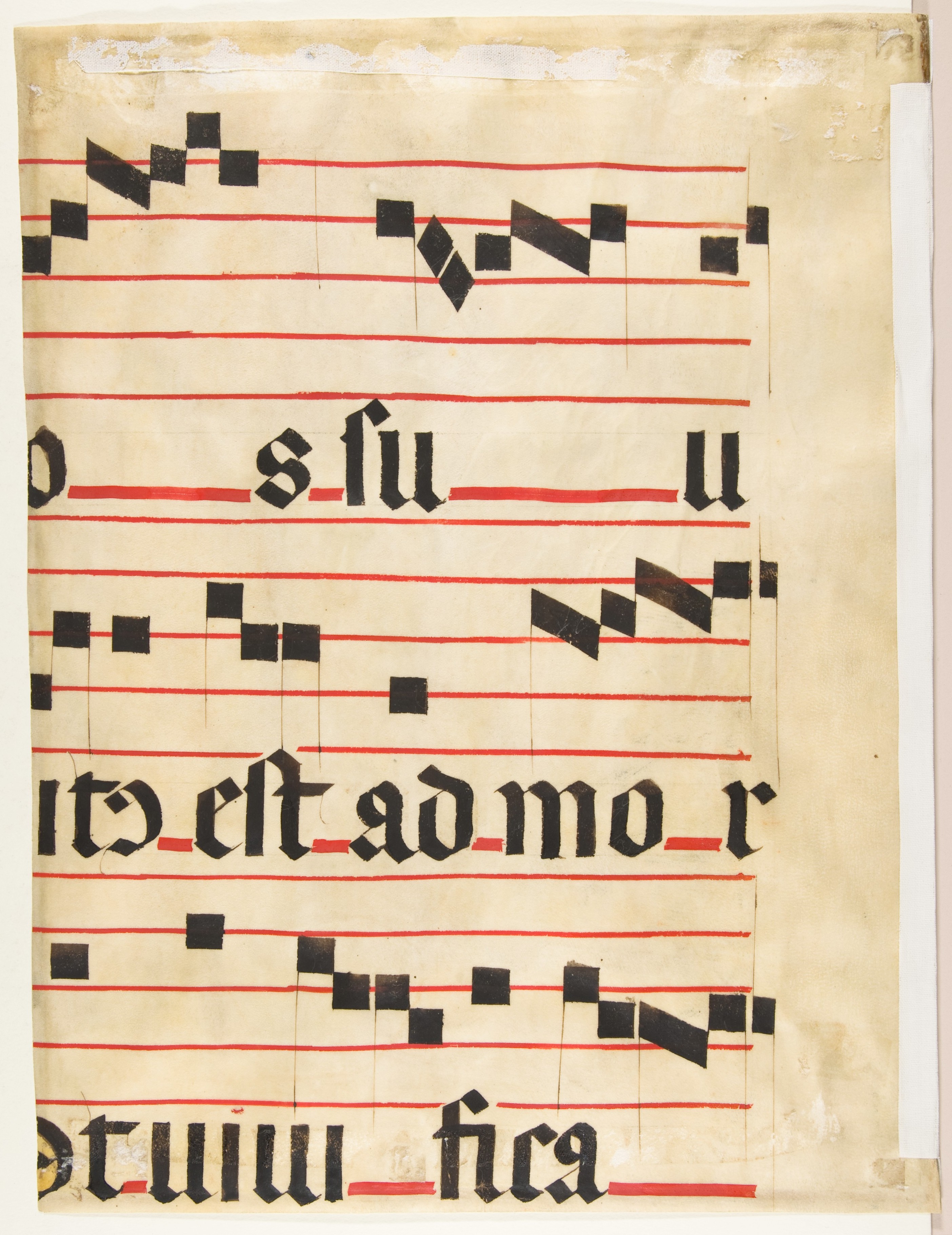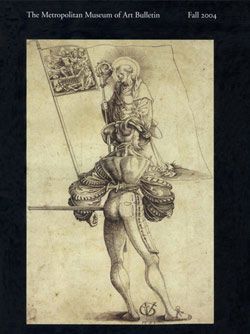Christ at the Column
Delli brothers Italian
Not on view
Dating from around 1440-70, this large, well preserved, delicately rendered drawing on fine vellum is of great rarity and historical significance. The drawing embodies the unique mixture of Italian and Spanish elements that prominently defined painting in early to mid-15th century Spain, particularly in the regions of Castilla and Leon. It was produced in Spain, in the workshop of the Delli brothers (Dello Delli, Niccolò Delli, and Sansone Delli), Florentine artists who established themselves in the region of Salamanca and Avila in Spain, between 1433 and 1445. Their most famous work is the monumental main altarpiece (retablo mayor) of the Old Cathedral of Salamanca, from 1437-45.
Born in Florence around 1403, the eldest brother, Dello Delli, who was called "Daniel Florentino" in Spain, was probably the leader of the workshop, and is the most famous of the brothers, as he was the subject of a biography by the eminent historian Giorgio Vasari in 1550 and 1568. As the documents tell, Dello arrived in Spain around 1433, and achieved great renown in his day for his mastery of geometry, pictorial perspective, and architecture, meriting for these reasons a knighthood from the Spanish king, Juan II of Castilla, and commissions at the court of the king of Naples, Alfonso I of Aragón, in 1446. The Florentine republic also recognized Dello's knighthood in 1446. However, it is the middle brother, Niccolò, who is the best-documented member of the team in terms of actual, identifiable works. He became known as "Nicolás Florentino," and was born around 1413. Niccolò was contracted in 1445 to produce the prestigious fresco in the apse, above the newly completed monumental altarpiece (retablo), of the Old Cathedral of Salamanca; he also restored paintings in the Cathedral of Valencia in 1469, and died in 1471 in that city. The youngest brother, Sansone, born in 1416, was closely dependent on Dello in his early years, and is documented to have been in practice with Niccolò in the environs of Salamanca and Avila, from 1445 to 1466.
The drawing appears to have been done in two separate campaigns by closely related hands in the same workshop. The finest portions of the drawing seem to have been drawn first, and very delicately, with pen and golden brown ink. The tonal control of the golden brown ink passages is exquisite. The drawing seems to have then been reworked by a less sensitive hand with pen and nearly black ink; much of the background seems to belong to this second campaign of work. (A similarly "two-handed" intervention characterizes the execution of a number of the painted panels of the Salamanca retablo.) Selective finishing touches of yellow and green color appear to have been added, also at this later stage
The foreground portrays a large devotional image of the flagellated Christ, with hands and feet tied onto a slender column in the center, and flanked by two kneeling donors of a considerably smaller scale. The kneeling donor on the left represents a friar from a mendicant order (possibly Dominican, but this is not certain), and the kneeling, tonsured figure on the right is a high-ranking ecclesiastic, possibly a canon. The figures of Christ and the donors are placed within a steeply foreshortened architectural space much like a chapel, with a small balustrade in the middle ground, and, beyond, a distant view into a hilly landscape with tiny hermit buildings. Three large scrolls with inscribed prayers accompany the figures of the donors.
The scroll on the upper left reads: "Pater meus et mater mea deliquerunt me dominus / autem adsumpsit me / gratias tibi ago almiflue Ihesu rex / qui me dignatus es recipere in tuorum numerum / sanctorum animam meam tibi commendo qui es bene/dictus in secula seculorum Amen /." This prayer may be translated as: "My father and my mother have left me, but the Lord has taken me up. I give thanks to you, gracious [or beneficent] Jesus, King, who deigned to receive me into the number of your saints, I commend my soul to you who are blessed forever and ever, Amen." The scroll on the upper right states: "Domine deus ostende in me misericordiam / tuam et protege me et confirma me in ve/ritate tua et doce me facere voluntatem / tuam quia deus meus es tu." That is: "Lord God show to me your mercy and protect me and confirm me in your truth and teach me to do your will, because you are my God." The scroll at the bottom reads: "Nisi enim ille fuisset missus / nemo nostrum / ab iniquitate fuisset dimissus." That is: "For if he had not been sent, none of us would have been released from sin."
Spanish art before 1500 was largely shaped by the contributions of foreign artists. The present sheet appears to be the only extant 15th century drawing by an Italian artist active in Spain that is currently known. Extremely few drawings from before 1500 of comparable importance to the history of Spanish art are extant, and these are mostly by Northern artists. Among these known examples, none appears to combine the quality, condition, and size of this work.
The Museum's drawing broadly reflects the International Gothic style that was practiced by Italian artists from 1430 to 1450. This is most evident in the delicately stippled application of the pigments with the brush in the modeling, in the conception of the figure of Christ with elegantly attenuated bodily and facial proportions, and in the steeply foreshortened architectural space with landscape in roving perspective. Yet the drawing also incorporates elements that are more typically Spanish, indebted to the strong Netherlandish tradition of painting that predominated in Spain between 1430 and 1500. This Northern aspect is especially evident in the drapery style of the donors with broken-up, angular folds, in the curlicues design of the inscribed scrolls, and in the use of a pronounced hieratic scale in the figures, with an iconic, large Christ in the center and two minute kneeling donors on the sides.
The 1445 contract for the apse fresco of the Old Cathedral of Salamanca, awarded to Niccolò Delli (Nicolás Florentino), stipulates repeatedly that the painter was to base his work for the frescoes on "drawings done on vellum," and that the cathedral administrators had previously approved. It is therefore reasonable to suppose that the present drawing, done on vellum, may have first been conceived of to serve a similar purpose: as a demonstration piece, of work to be carried out. The drawing may have then been reworked in the studio, with finishing touches in color, for a patron to use as a devotional image in its own right.
The imagery of the flagellated Christ (originating loosely in the passage from Matthew 27:26-29) especially abounds in Spanish art, in works produced for both public and private devotion, and served religious practitioners as a vivid reminder in contemplating acts of suffering, self-imposed mortification, and contrition. As seen in the present drawing, the monumental motif of Christ elaborately tied to the column - both hands and feet - may have been especially relevant to confraternity practice. The motif of Christ tied, both hands and feet, is very rarely found in Italian art, but is quite common in the Northern traditions that influenced Spanish painting. The Confraternities of the Flagellants flourished in Spain in particular numbers, and in Salamanca this Medieval institution, the "Cofradía de Jesús Flagelado," still exists today. The prayer that is inscribed on the upper left scroll above the kneeling friar is part of the "office of the dead" in many books of hours of the period. The image seen in the proposed drawing may also therefore be pertinent in a funerary context.
(Carmen C. Bambach; 2004)
Due to rights restrictions, this image cannot be enlarged, viewed at full screen, or downloaded.
This artwork is meant to be viewed from right to left. Scroll left to view more.







